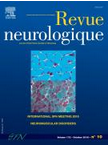 The broad clinical spectrum of myotonic dystrophy type 1 (DM1) creates particular challenges for both medical care and design of clinical trials. Clinical onset spans a continuum from birth to late adulthood, with symptoms that are highly variable in both severity and nature of the affected organ systems. In the literature, this complex phenotype is divided into three grades (mild, classic, and severe) and four or five main clinical categories (congenital, infantile/juvenile, adult-onset and late-onset forms), according to symptom severity and age of onset, respectively. However, these classifications are still under discussion with no consensus thus far. While some specific clinical features have been primarily reported in some forms of the disease, there are no clear distinctions. As a consequence, no modifications in the management of healthcare or the design of clinical studies have been proposed based on the clinical form of DM1. The present study has used the DM-Scope registry to assess, in a large cohort of DM1 patients, the robustness of a classification divided into five clinical forms. The main objective was to describe the disease spectrum and investigate features of each clinical form.
The broad clinical spectrum of myotonic dystrophy type 1 (DM1) creates particular challenges for both medical care and design of clinical trials. Clinical onset spans a continuum from birth to late adulthood, with symptoms that are highly variable in both severity and nature of the affected organ systems. In the literature, this complex phenotype is divided into three grades (mild, classic, and severe) and four or five main clinical categories (congenital, infantile/juvenile, adult-onset and late-onset forms), according to symptom severity and age of onset, respectively. However, these classifications are still under discussion with no consensus thus far. While some specific clinical features have been primarily reported in some forms of the disease, there are no clear distinctions. As a consequence, no modifications in the management of healthcare or the design of clinical studies have been proposed based on the clinical form of DM1. The present study has used the DM-Scope registry to assess, in a large cohort of DM1 patients, the robustness of a classification divided into five clinical forms. The main objective was to describe the disease spectrum and investigate features of each clinical form.
